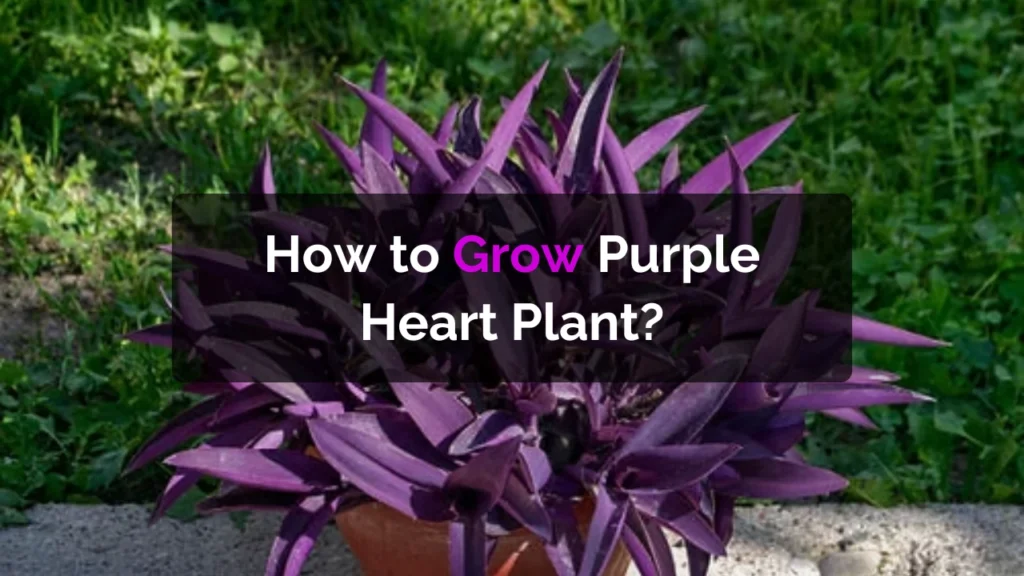The purple heart plant is loved for its striking purple leaves and easy care. It’s a hardy perennial that can grow both indoors and outdoors, making it perfect for beginners. Whether you want it as ground cover or a hanging plant, learning how to grow a purple heart plant is simple and rewarding.
Understanding the Purple Heart Plant
The purple heart plant is known for its deep purple foliage and small pink flowers that bloom during the warm season. It’s often used in gardens, hanging baskets, and pots due to its trailing growth habit. The plant thrives in warm climates and adds color to any landscape.
Ideal Growing Conditions
1. Light Requirements
Purple heart plants love bright, indirect sunlight. They can tolerate partial shade but will show deeper purple color when exposed to more light. If grown indoors, place the pot near a sunny window for the best growth.
2. Soil Type
Well-draining soil is essential for this plant. A mix of potting soil, perlite, and compost works well. Avoid heavy or clay soil, as it can retain too much moisture and cause root rot.
3. Watering
Water the plant regularly, but don’t let the soil stay soggy. Allow the top inch of soil to dry out between watering. During winter, reduce watering as the plant’s growth slows down.
4. Temperature and Humidity
The ideal temperature range for a purple heart plant is between 60°F and 80°F (15°C–27°C). It prefers moderate humidity levels. If grown indoors, avoid placing it near cold drafts or heating vents.
5. Fertilization
Feed the plant every four to six weeks during spring and summer using a balanced, water-soluble fertilizer. Overfeeding can lead to leggy growth, so follow the recommended dosage on the fertilizer label.
How to Propagate Purple Heart Plant
One of the easiest ways to grow more purple heart plants is through stem cuttings.
- Cut a 4–6 inch section from a healthy stem.
- Remove the leaves from the lower half of the cutting.
- Place it in water or directly into moist soil.
- Keep it in a warm, bright location until roots develop.
Within a few weeks, your cutting will establish roots and start growing.
Common Problems and Solutions
- Yellow Leaves: Often caused by overwatering. Let the soil dry before watering again.
- Faded Color: Lack of sunlight can cause dull leaves. Move the plant to a brighter spot.
- Leggy Growth: Trim back long stems to encourage fuller growth.
Tips for Healthy Growth
- Prune regularly to keep the plant bushy and vibrant.
- Use well-draining pots if growing indoors.
- Keep an eye out for pests like aphids and spider mites.
- Mulch around outdoor plants to retain moisture and reduce weeds.
Final Thoughts
Growing a purple heart plant is simple when you provide the right light, soil, and care. Its vibrant purple leaves make it a standout addition to any space. Whether in a pot or garden bed, this plant brings life and color wherever it grows.
FAQs
Can purple heart plants grow indoors?
Yes, they can grow well indoors if they receive enough bright, indirect light.
How often should I water my purple heart plant?
Water once the top inch of soil feels dry. Avoid keeping the soil soggy to prevent root rot.
Does the purple heart plant need full sun?
It prefers bright light and partial sun. More sunlight enhances its purple color.
How do I make my purple heart plant fuller?
Prune the long stems regularly to encourage bushier and denser growth.
Is the purple heart plant easy to grow?
Yes, it’s a low-maintenance plant that grows quickly and adapts to different conditions.





